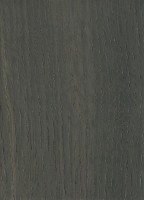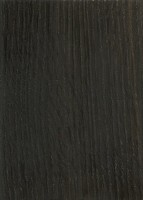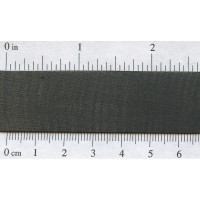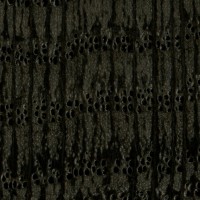Bog Oak, much like Brown Oak, is not a specific species, but is rather a term that designates oak that has been buried in a peat bog for hundreds or sometimes thousands of years. The extremely low oxygen conditions of the bog protect the wood from normal decay, while the underlying peat provides acidic conditions where iron salts and other minerals react with the tannins in the wood, gradually giving it a distinct dark brown to almost black color.
Though Bog Oak does not describe a specific tree, it tends to most frequently occur in the United Kingdom, with English Oak being the most commonly salvaged species taken from bogs. Since there is such a limited supply of the wood—with Bog Oak essentially being the very early stages of fossilization—prices for this type of wood are very high.
A special thanks to Steve Earis for providing the wood sample of this wood species.
 |
 |
 |
 |
- Black Oak (Quercus velutina)
- Brown Oak
- Bur Oak (Quercus macrocarpa)
- California Black Oak (Quercus kelloggii)
- Cherrybark Oak (Quercus pagoda)
- Chestnut Oak (Quercus prinus)
- English Oak (Quercus robur)
- Holm Oak (Quercus ilex)
- Japanese Oak (Quercus mongolica)
- Laurel Oak (Quercus laurifolia)
- Live Oak (Quercus virginiana)
- Oregon White Oak (Quercus garryana)
- Overcup Oak (Quercus lyrata)
- Pin Oak (Quercus palustris)
- Post Oak (Quercus stellata)
- Red Oak (Quercus rubra)
- Scarlet Oak (Quercus coccinea)
- Sessile Oak (Quercus petraea)
- Shumard Oak (Quercus shumardii)
- Southern Red Oak (Quercus falcata)
- Swamp Chestnut Oak (Quercus michauxii)
- Swamp White Oak (Quercus bicolor)
- Turkey Oak (Quercus cerris)
- Water Oak (Quercus nigra)
- White Oak (Quercus alba)
- Willow Oak (Quercus phellos)

Three or four years ago I started turning non-exotic wood for inserts of fly fishing rods’ reel seats. A friend of mine supplied me with one pretty sturdy piece of the bog oak from a marsh in Southern Banat, Serbia. I had to cut it on the small hobby circular saw to the size appropriate for turning the wood insert. It was very difficult sawing, owing to high content of sand and a tedious turning afterwards for the same reason, that blunted immediately the otherwise sharp chisel. Sanding (120-to 1500 grit) that followed turning at high speed (6000rpm) failed to… Read more »
Thanks for sharing. Looks good.
You might consider using thin CA glue for small projects like this to wick into those open areas and help stabilize the wood and fill in some of the gaps. Some turners even use CA to entirely finish small pieces too. There are some good tutorials on YouTube.
My understanding is that bog oak is primarily associated with Ireland, not the UK.
…when you find and get bogwood from water,how do you preserve it from cracking?
A few weeks ago, I found a stick in the forest that looked sturdy enough to be made into a walking stick. It was a crooked limb from an oak tree that had been rotting away on the ground. Probably over the course of more than a decade. The sapwood was completely gone, but the leftover heartwood felt safe and sound to use. So, unaware of what was hiding beneath the puckery brown surface, I took the stick home. When I sawed the piece to size, I noticed the wood was completely black about half an inch inwards. Only the… Read more »
This yo-yo is made from Russian Bog Oak, radiocarbon dated to be 3,720 +/- 50 years old.
I propose a natural marine relic Bog Oak with the age of 8110 years-https://www.bogoak.biz
I think it would work best for the fret/finger board.
not in the uk most bog oak can be found on the bogs of ireland. if you want some, wait till they are digging for turf, they throw aside the bog oak and you can pick it up as much as you want.
And it stinks as rotten cheese.
I’ve bought this wood thinking that it would be amazing but is the worst wood i’ve ever found, At the first sight it looks like a dark oak, some minutes after every cut it bends, the day after the shape is completly crocked.
Never heard of this before; do you know the moisture content of the wood? It sounds like you’re dealing with green wood. I’d try cutting, stickering, stacking, and weighing the stack down — or clamp it down if necessary.
The pipe organ built by Jürgen Ahrend of Leer-Loga, Germany in 1972 for Beall Concert Hall at the University of Oregon at Eugene had sharp keys made of bog oak. Unforunately, in about ten years or so these hard worn down from constant playing, so that the surface of the keys had become quite rough and sinewy to the touch. So these keys were replaced with an exotic blackwood. I was an organ student at UO 1981-83.
from time to time carved Bog Oak items are offered for sale which have originated in Ireland.